Pure Plant Meals With Mycorrhizae
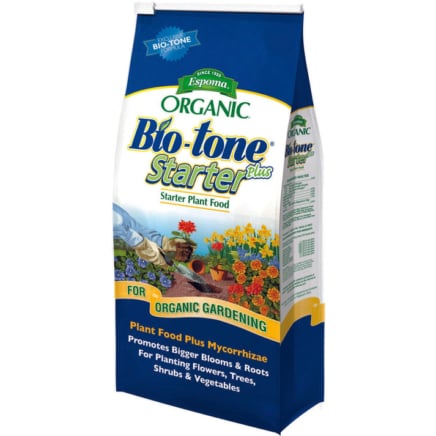

Espoma Bio-Tone Starter Plus Pure Plant Meals
Tomato & Vegetable Fertilizer
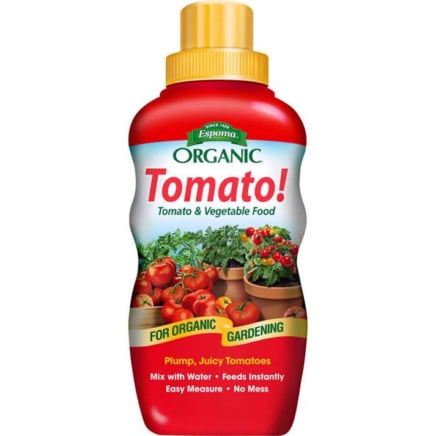

Espoma Pure Liquid Tomato Plant Meals
Sweet Bell Pepper Seed Combine


Sweet Bell Combine Sweet Pepper Seeds
Yard peppers sometimes experience annoying diseases and pests. Always intention for prevention, as just a few of those infections can kill your crop. When prevention doesn’t work, remedy will reduce the harm so your peppers can proceed to develop.
Even of their native differ of tropical America, peppers battle infections when their conditions swing exterior their preferences. Intention to current your greens frequent water, free-draining soil, and 6 to eight hours of direct daylight. This care prevents lots of the excessive diseases.
When uncertain, seize a magnifying glass to look intently for indicators. Uncover colors, spots, or fuzz that may show you how to set up infections. Look forward to these 9 widespread pepper diseases this season.
Anthracnose
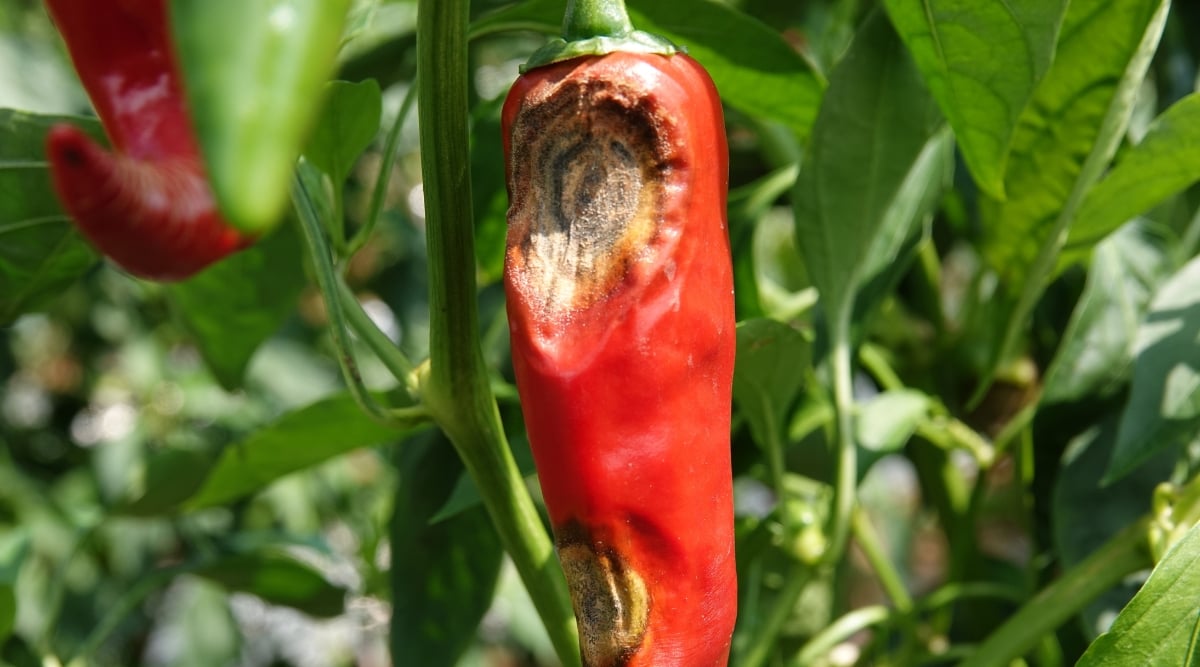

Anthracnose sounds unhealthy! Merely the establish alone tells you this generally is a extreme sickness. It is an an an infection from Colletotrichum fungi—they invade ripe fruit, creating rotting lesions. The lesions develop, lastly producing spores that unfold onto totally different pepper fruits. This sickness is unquestionably preventable with cultural conditions.
Seek for lesions on ripe and overripe pepper fruit. They’re black or brown, sunken, and moist. Anthracnose may proceed spreading after harvest whenever you’ve launched your peppers inside. Look forward to rotten spots, and remove any peppers that exhibit these indicators.
Anthracnose thrives in warmth temperatures and plenty of water, each from rain or irrigation. Use well-draining soil and water solely as quickly as your soil is dry. Space a minimal of 1 foot apart to encourage appropriate airflow. In case you could have space, rotate the place you plant peppers every two to some years to take care of anthracnose from overwintering.
Copper fungicide slows anthracnose infections, stopping them from spreading to healthful plant tissue. Apply doses in step with the bundle deal’s directions. Bolster your pepper’s immunity by guaranteeing there could also be appropriate fertility present throughout the soil. Mulch may assist too.
Root Rot
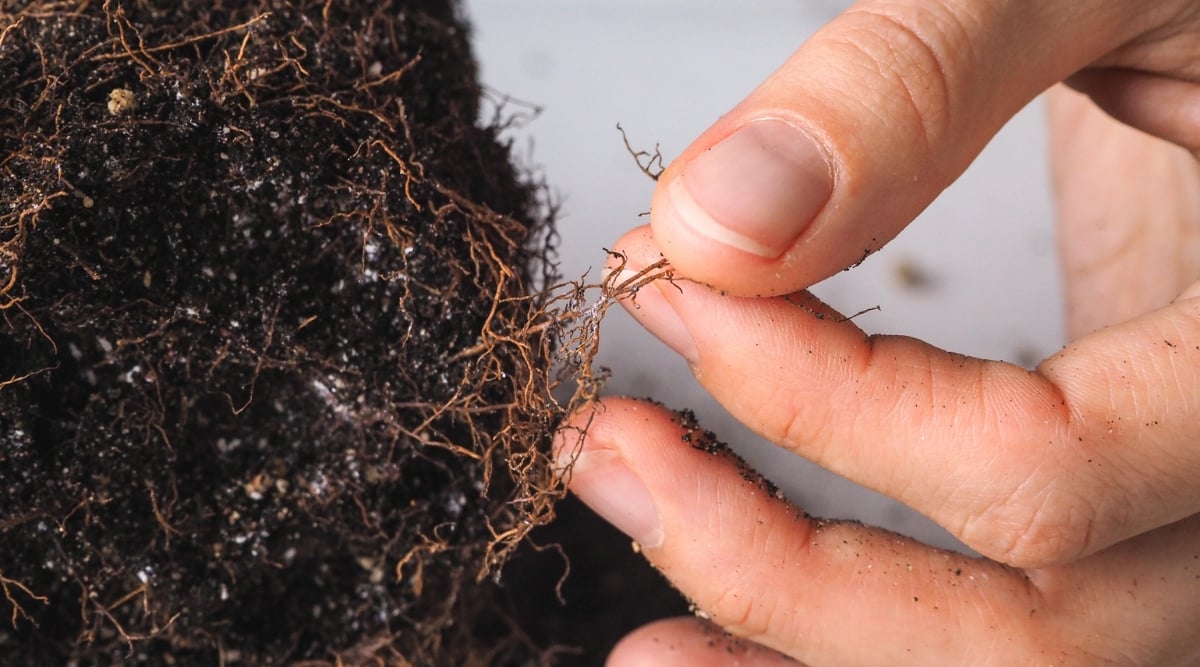

Root rot grows from a plethora of organisms that assault peppers. These pathogens assault tender pepper roots when the soil is excessively moist. Although many organisms set off root rot, all of them are inclined to point out associated indicators.
Root rot indicators embrace:
- Gradual or stunted growth
- Yellow leaves
- Wilting
- Root dying
Root rot organisms thrive in overly moist soils. Forestall an an infection by using free-draining soil and watering ceaselessly as quickly because the soil dries. Stay away from watering soil that is already moist—additional moisture may pool, creating good conditions for root rot growth. Peppers admire moist, nonetheless not soggy soil. Moreover they revenue from a mycorrhizal remedy; use helpful mycorrhizae at planting to current your crop added security from root rot.
As quickly as root rot reaches a positive degree, it is unattainable to remedy. Take away yellow leaves and lifeless stems to cease additional harm. If actually certainly one of your crops has the an an infection, take away it to limit root rot’s unfold. Do away with your sick pepper away out of your yard.
You can presumably save a plant that has root rot by eradicating it from the yard and quarantining it. Look at the idea system, and see if there are nonetheless a substantial amount of white, healthful roots. If there are, take away the lifeless, brown, and rotten roots with scissors or shears. Then replant in a sterile container with clear soil.
Blossom-End Rot
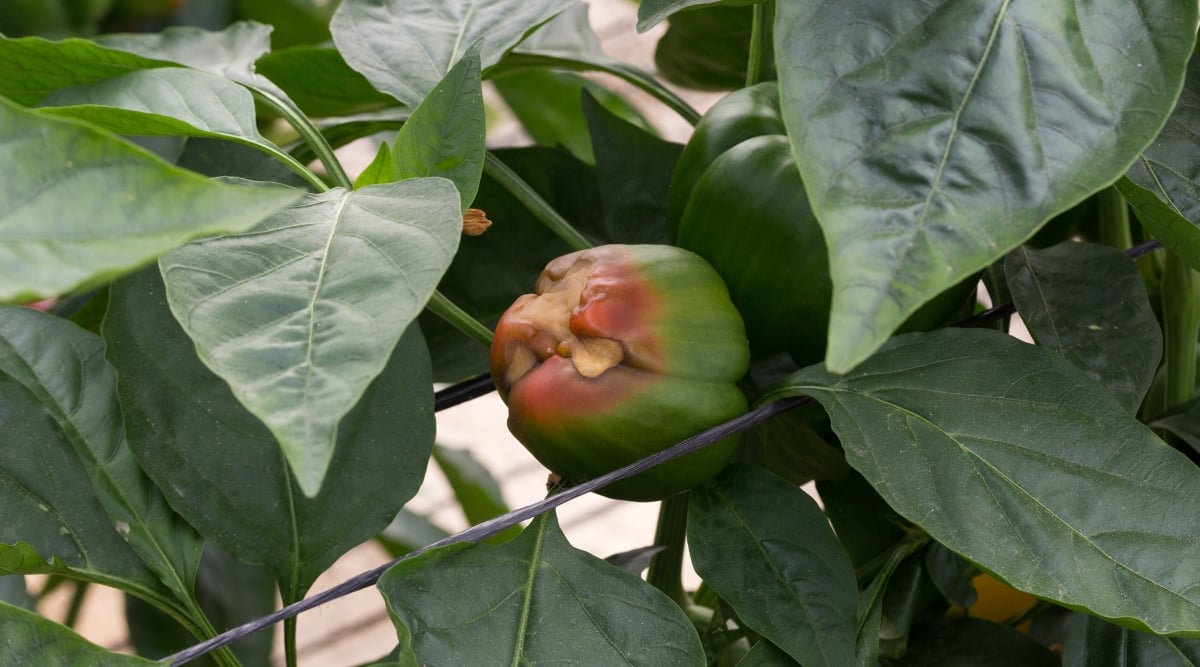

Blossom-end rot happens to every gardener a minimal of as quickly as—or so I’ve heard! After I started container gardening, I found factors with this sickness on tomatoes and peppers. It causes brown-black mottled growth on the ends of pepper fruits. It’s ugly, and it makes it troublesome to eat all of the fruit. The good news? It’s merely curable.
Look forward to peppers with brown, discolored spots on them. Spots unfold over peppers near the highest the place the blossom was. These spots unfold inside and outdoors, leading to mushy, rotten peppers. Salvage contaminated peppers by eradicating rotten spots everytime you harvest.
This sickness occurs when the crop has factors taking up calcium, often due to drought stress. The dearth of fixed moisture makes change of calcium troublesome for soil microbes. Be sure to’re using a frequent watering schedule that maintains moist nonetheless not soggy soil.
Within the occasion you’re watering ceaselessly and your peppers nonetheless have rotten spots, they may need an utility of fertilizer. Use an pure fertilizer for fruiting crops, making use of a half dose weekly for two to some weeks. Espoma Pure Liquid Tomato Meals is good for this. Watch new peppers as they kind to see whether or not or not blossom-end rot subsides.
Powdery Mildew
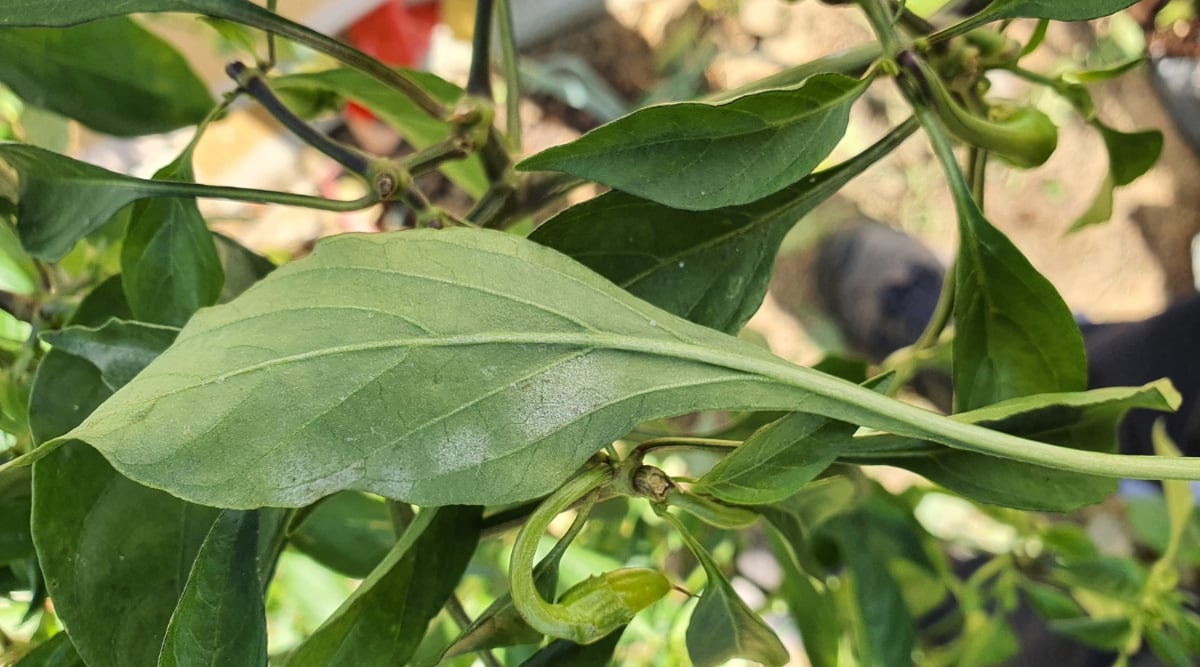

Powdery mildew is an annoying sickness in gardens everywhere. Evaluation reveals that Leveillula taurica is the primary pepper pathogen. It would most likely kill peppers in excessive infestations, although it principally slows their growth and makes them ugly. Powdery mildew’s tiny spores unfold in warmth, humid conditions. Look forward to indicators from spring by the use of fall.
All powdery mildew strains make patches of fuzzy gray-white growth on pepper leaves. The mould spreads to totally different leaves, lastly infecting surrounding crops. This sickness occurs typically in warmth climates with extreme in a single day humidity. Overhead irrigation causes moisture to sit down down on the foliage, leading to extreme ambient humidity.
Powdery mildew spreads in warmth locations with extreme humidity spherical peppers. This occurs with crowded crops, low airflow, and shade. Forestall the sickness by spacing crops precisely beneath full photo voltaic. Plant sturdy, disease-resistant varieties, mulching their soil successfully. In climates the place powdery mildew is prevalent, avoid overhead sprinklers or irrigators—they set off bigger humidity, which leads to elevated fungal spore germination.
Forestall small outbreaks by slicing off contaminated leaves, then remove them. If powdery mildew retains rising, use actually certainly one of these pure methods sparingly. Alternate them to avoid harboring treatment-resistant strains of this fungus:
- Sulfur fungicide
- Potassium bicarbonate fungicide
- Milk spray
- Bacillus subtilis fungicide
Bear in mind that these aren’t always environment friendly at lowering the presence of the sickness, nonetheless in its place are useful for stopping its unfold.
Mosaic Virus
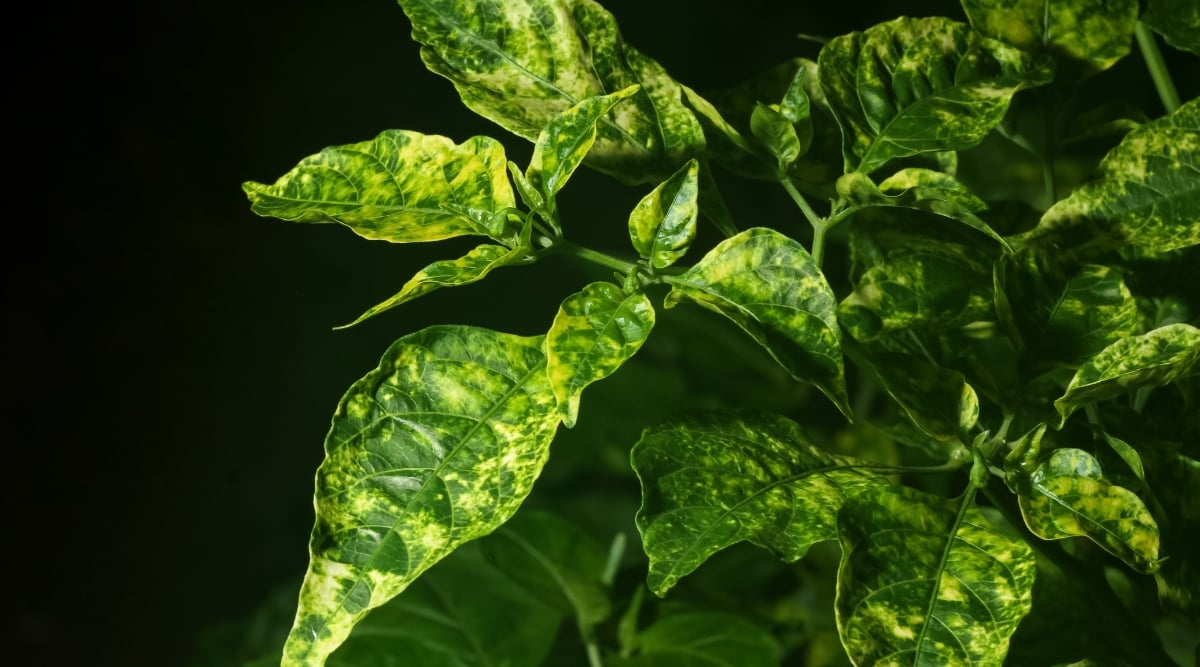

Two mosaic viruses typically infect peppers: tobacco and cucumber mosaic virus. They unfold by the use of plant supplies, pollen, and aphids that switch from one plant to the next. Every mosaic viruses have quite a lot of hosts, although each considerably targets species throughout the cucumber and tobacco households. They may moreover infect peppers when conditions are correct.
Spot these viruses rising on leaves and fruits—seek for rings of yellow or brown mottled spots. Contaminated crops may have stunted growth, and lifeless components. They may exhibit leaf curl and hastily die after exhibiting just a few of those indicators. The mosaic virus prevents crops from taking in nutritional vitamins.
Encourage good airflow, by spacing out your crops a foot or additional apart. Pull weeds in your yard to cease mosaic virus from rising on neighboring foliage. Tobacco mosaic virus may unfold from tobacco merchandise, so preserve them and their smoke away from the yard. Individuals who smoke ought to scrub their fingers sooner than re-entering the yard. Plant mosaic virus resistant varieties, significantly in case you’ve had factors with the sickness thus far. The ‘Sweet Bell Combine’ is tobacco mosaic virus resistant, and the fruits are deliciously sweet!
Using milk sprays on constructions throughout the yard works surprisingly successfully to limit tobacco mosaic virus. There are not any acknowledged cures for cucumber mosaic virus. Forestall this sickness from rising by eradicating contaminated crops. Do away with them away out of your yard to take care of these diseases from spreading.
Verticillium Wilt
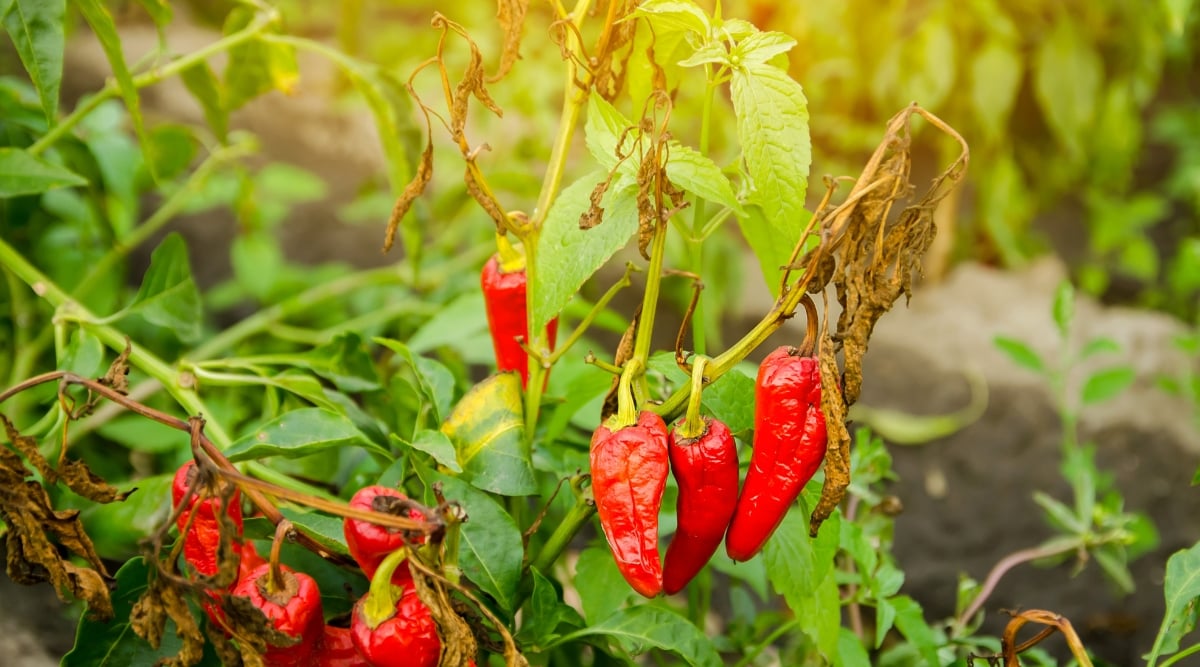

The soil fungus Verticillium dahliae creeps into mature crops by the use of the soil to their roots. It blocks cells from transporting water, inflicting wilting and dying. Ineffective stems create good conditions for verticillium wilt; it produces microsclerotia that overwinter and unfold.
Verticillium wilt presents itself as yellowing, lifeless leaves, and stems. Indicators start on the edges of the plant and switch inward. With time, complete crops wilt to the underside. Watch out for brown stems, leaves, or fruits. If one pepper wilts whereas one subsequent to it has yellowing leaves, it has attainable unfold.
Protect verticillium wilt away with appropriate cultural conditions like these:
- Arrange a yard plot with appropriate soil fertility
- Water and care in your peppers persistently
- Rotate with crops of broccoli, sorghum, corn, safflower, or barley every two years
- Be sure to’re using sterile devices
There isn’t a such factor as a acknowledged remedy for verticillium wilt. Soil solarization might go, although it moreover kills a great deal of helpful soil micro organism, leaving it open for various diseases. Take away all contaminated crops on the time of an an infection, and use prevention methods yearly—this builds resilient soil in your crops.
Phytophthora Blight
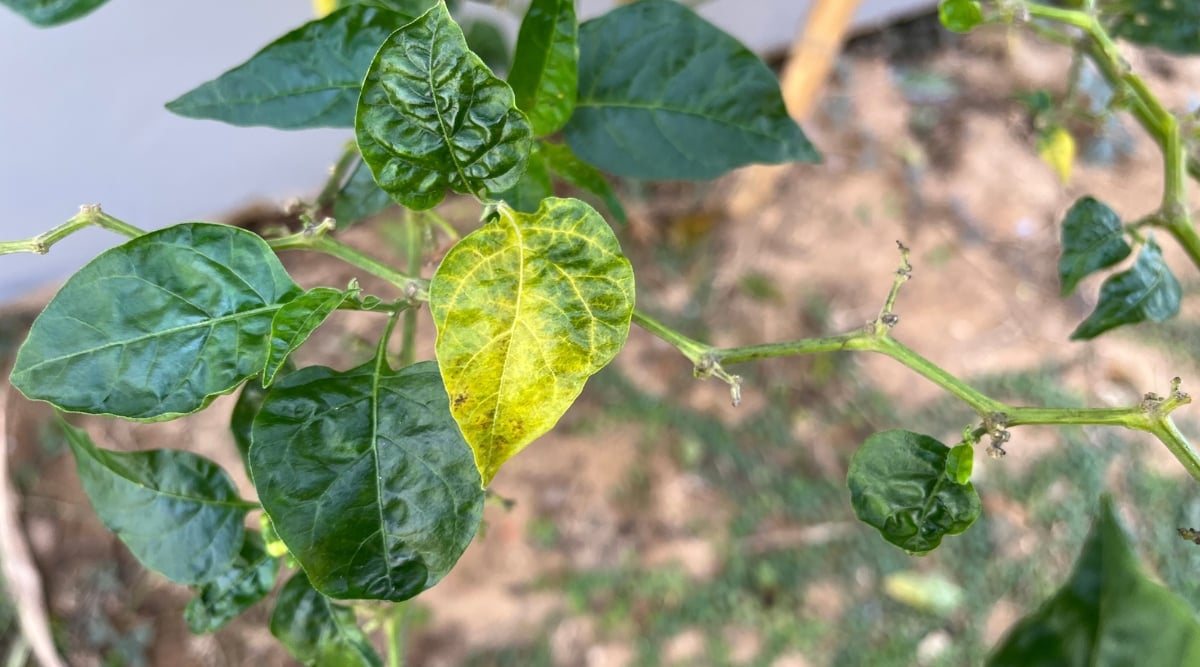

Blights are considerably robust on account of they’ll infect mature crops later throughout the rising season, nonetheless they’ll moreover impression youthful seedlings. This may increasingly more and more spell disaster in your treasured harvest! It infects roots, leaves, or stems sooner than spreading all by way of all of the crop.
This blight presents itself as dying or browning stems, along with dying roots. It’s laborious seeing the roots beneath ground, however, above-ground wilting is unquestionably viewable. Seek for infections all through scorching local weather between 75-90°F (24-32°C) when soils are moist and warmth concurrently.
Protect infections at bay by avoiding overhead irrigation. Sprinklers, however helpful, encourage splashing this oomycete from soils onto your crop foliage. This helps unfold phytophthora blight from its cozy residence throughout the soil onto your pepper’s leaves or fruits. Use drip irrigation, or slowly saturate vegetable beds with a trickling hose for an hour.
Moreover, current wonderful drainage in your peppers, and sanitize your devices between prunings. Do not plant in areas the place the fungus has been present if attainable. Develop disease-resistant varieties.
Take away any contaminated crops, and look forward to extra infections. Do away with any contaminated plant elements, and do not compost them. The prevention methods above will discourage this sickness from returning.
Bacterial Leaf Spot
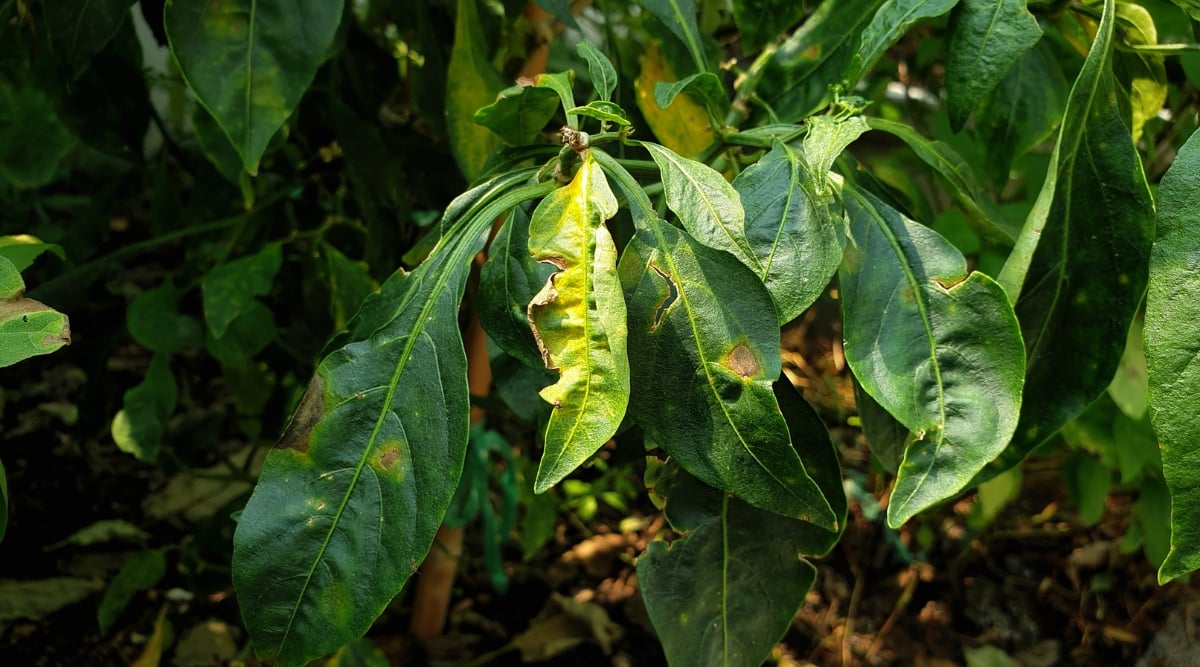

This bacterial sickness spreads yearly by the use of contaminated seeds and decaying pepper particles. It causes yellow-brown leaf spots, then disfigured fruits. Unchecked, it’ll zap your peppers of their power, inflicting premature dying all through spring or summer season.
Seek for spots on leaves. They’ll be yellow or brown at first in tiny patches. Over time spots unfold all by way of the leaves. They’ll yellow and fall en masse. Moreover, seek for malformed fruits spherical harvest time.
Protect bacterial leaf spots away by disinfecting devices in between makes use of. The aim with bacterial leaf spot is to stop its copy and cease extra unfold. Clear up crop particles at season’s end. Compost healthful plant supplies, nonetheless remove contaminated peppers away out of your yard. As always, an utility or two of compost or mulch helps by encouraging healthful organisms to battle bacterial leaf spots.
If solely part of your pepper’s leaves have spots, decrease them off and throw them far-off out of your greens. Attempt limiting bacterial leaf spots from spreading onto new crops. Evaluation reveals that copper sprays prohibit bacterial leaf spot from rising in excessive infestations, nonetheless they’ve for use together with totally different systemic chemical substances to be environment friendly.
Southern Blight
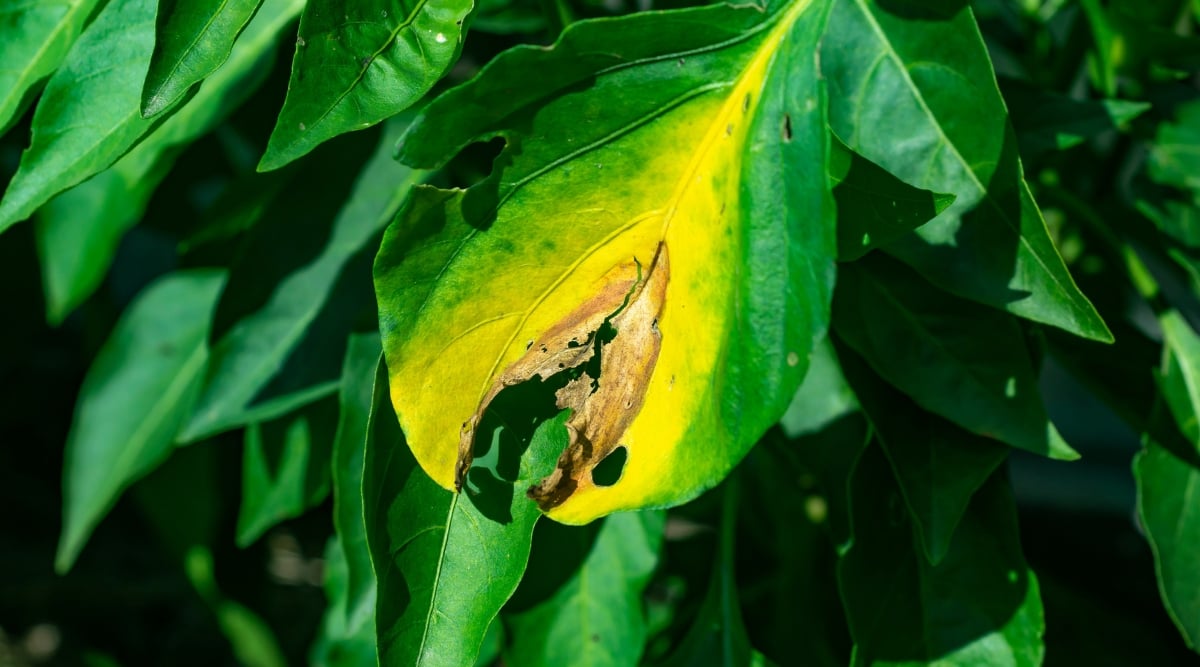

Southern blight is a fungus that primarily infects peppers in tropical areas all by way of southern North America. It typically impacts crops in temperate climates all through humid, warmth local weather. Southern blight spreads sometimes by the use of nursery supplies, so confirm new crops to ensure they’re disease-free sooner than transplanting.
Southern blight makes lesions on lower leaves and stems throughout the early ranges of an an infection. With time, the crowns, fruit, and prime leaves rot. Mycelia develop out of contaminated pepper supplies—they appear like white, fuzzy roots. Look forward to tiny brown or white bumps that appear like tiny mushrooms; they’re constructions that house spores throughout the soil.
Protect this fungus away by promoting these cultural methods:
- Look at new crops and soil for southern blight
- Space one foot apart
- Use compost or mulch in your soil
- Take away contaminated crops
- Rotate peppers with barley, sorghum, corn, or wheat every two to some years
As quickly as a pepper plant has southern blight there could also be nothing which will remedy it. Take away the contaminated plant, along with the surrounding soil. Soil solarization is one pure methodology for big southern blight growths. Apply black plastic onto your soil by way of the summer season season—scorching temperatures and direct daylight kill the fungus. Take away the plastic in autumn, and by spring you’ll be succesful to develop healthful peppers as soon as extra.
Pepper diseases may very well be irritating for you, significantly in case you’re merely starting to develop this tasty crop. I always encourage these three pure prevention methods, as they create healthful ecosystems for crop resilience:
- Compost! Healthful helpings of this nutritious mulch inoculate soils with sturdy microorganisms that fortify crops uncovered to diseases. It moreover promotes soil drainage with plenty of moisture, and water conservation all through dry spells.
- Space your crops appropriately. Appropriate spacing encourages good airflow spherical your crops, and it retains diseases from spreading shortly between peppers.
- Disinfect devices after you use them. This limits the unfold of diseases. I exploit rubbing alcohol to disinfect my devices, although it is best to make the most of any pure disinfectant.
[ad_2]
Provide hyperlink
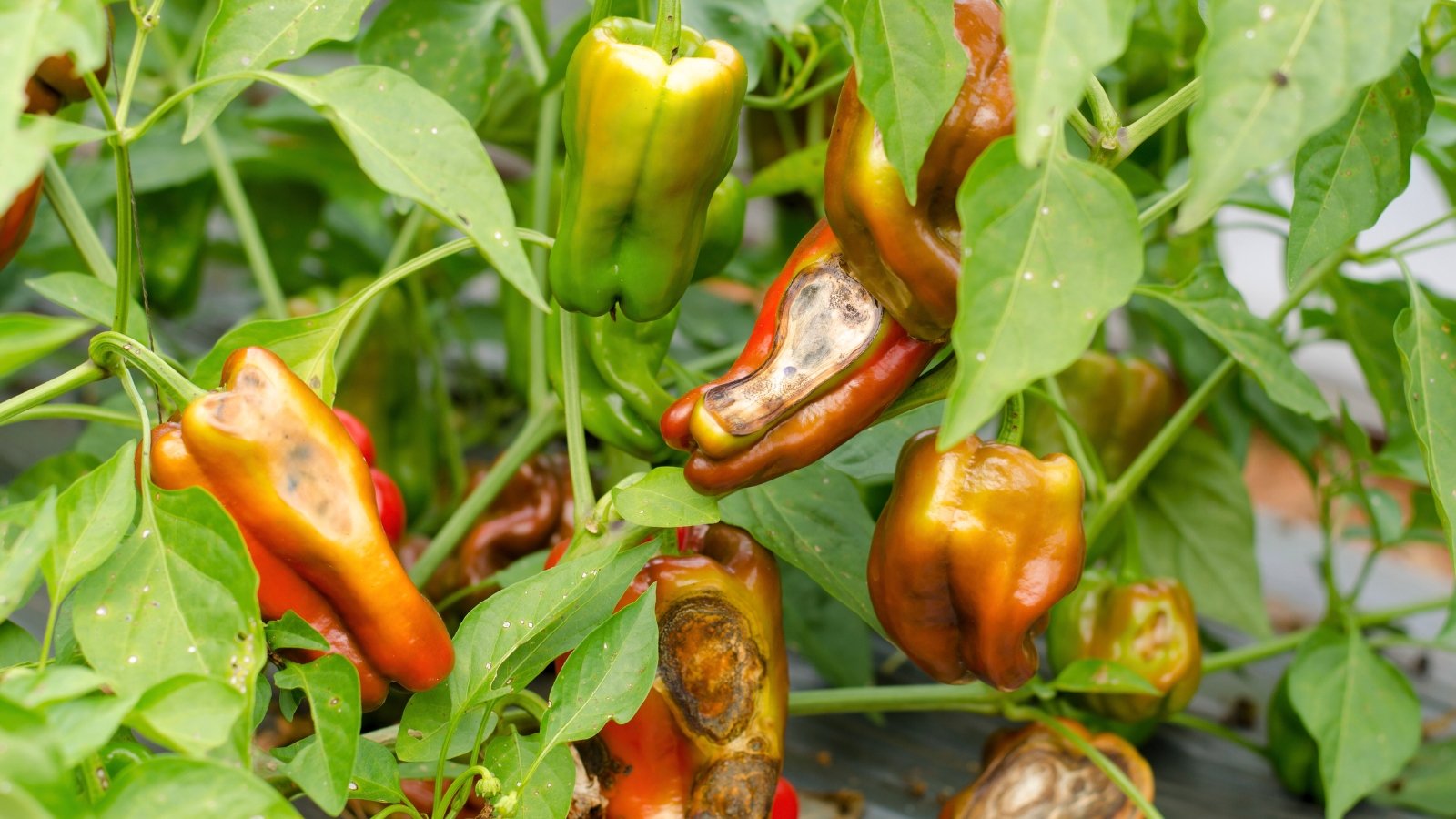
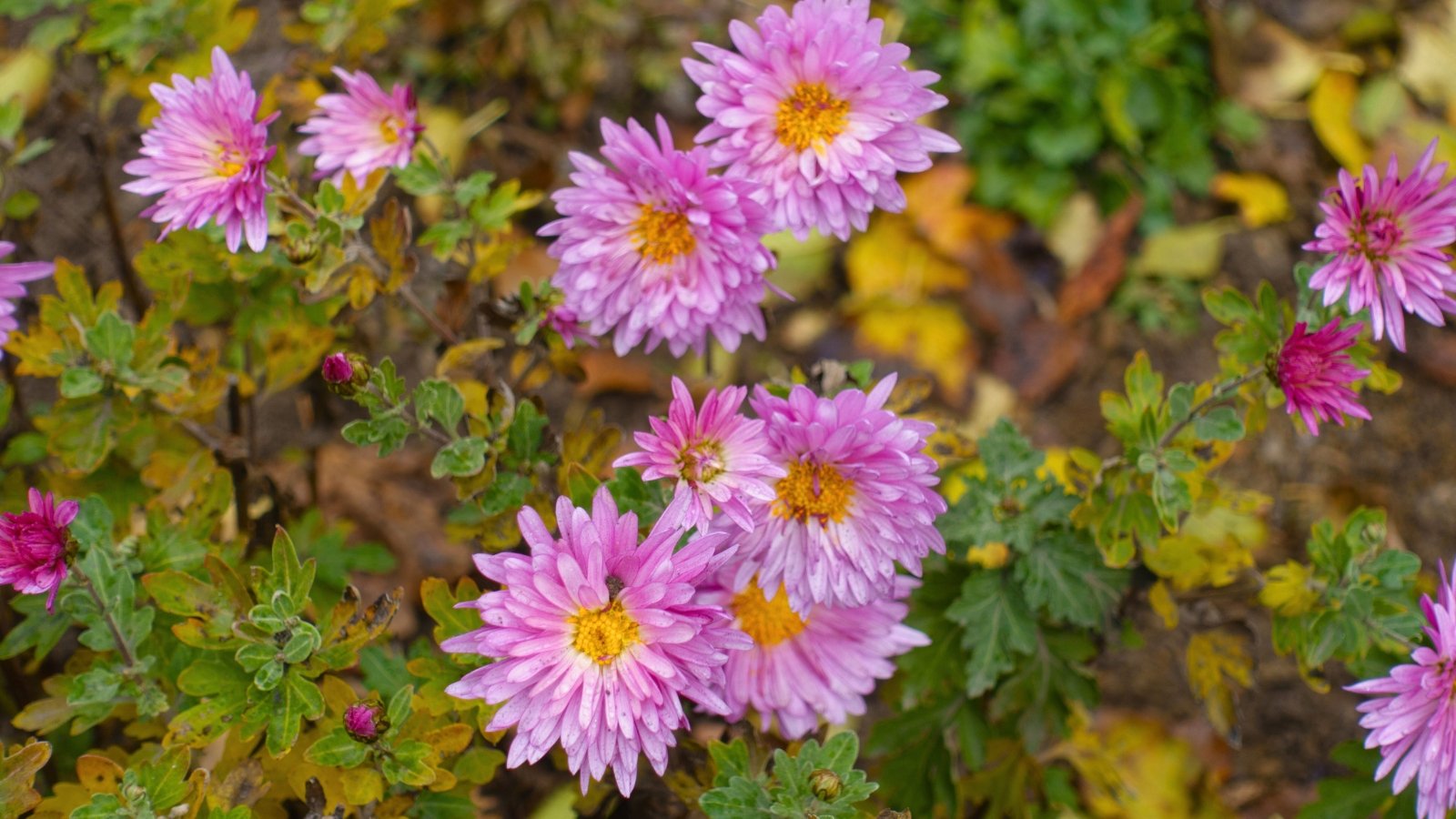
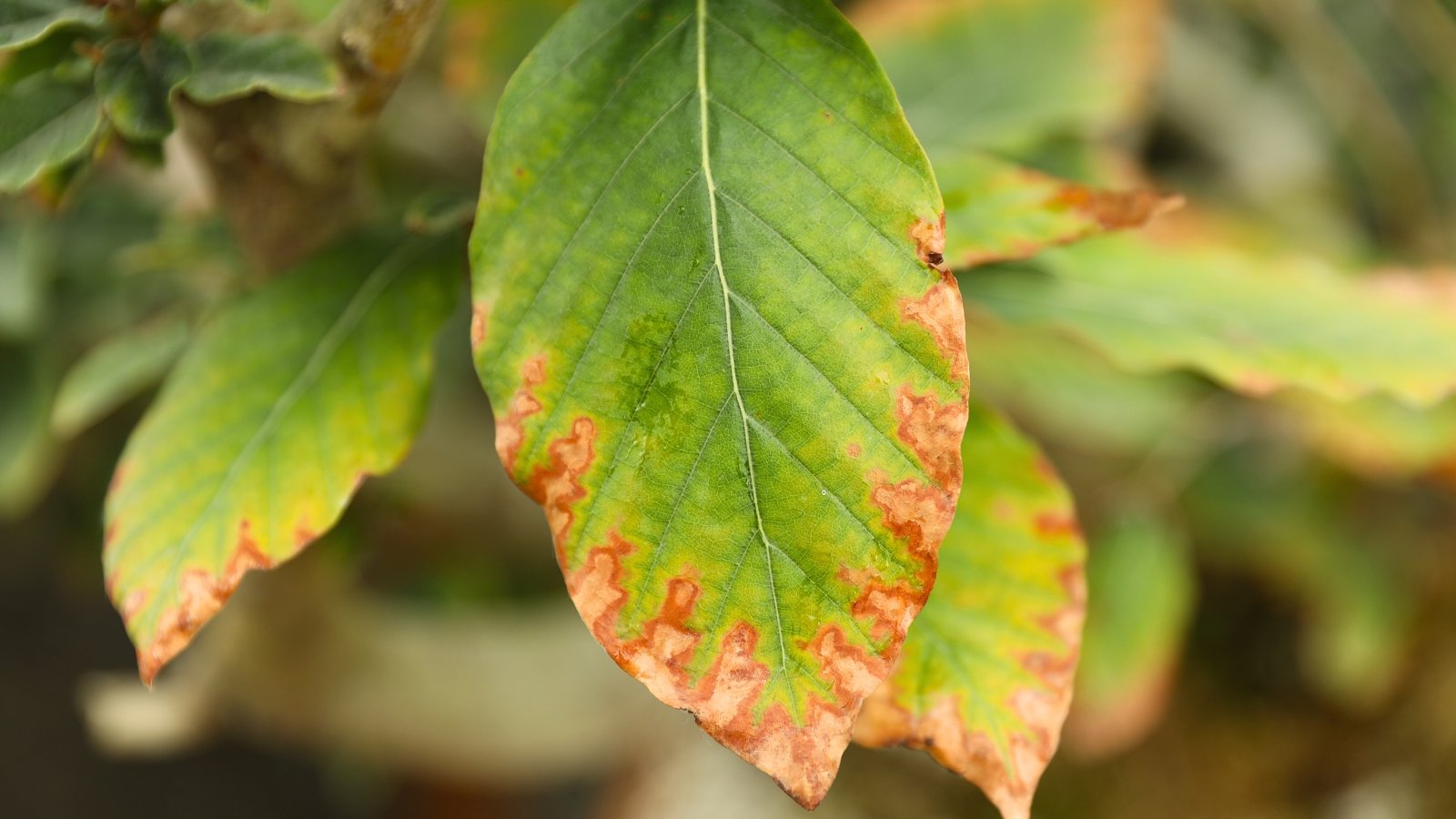
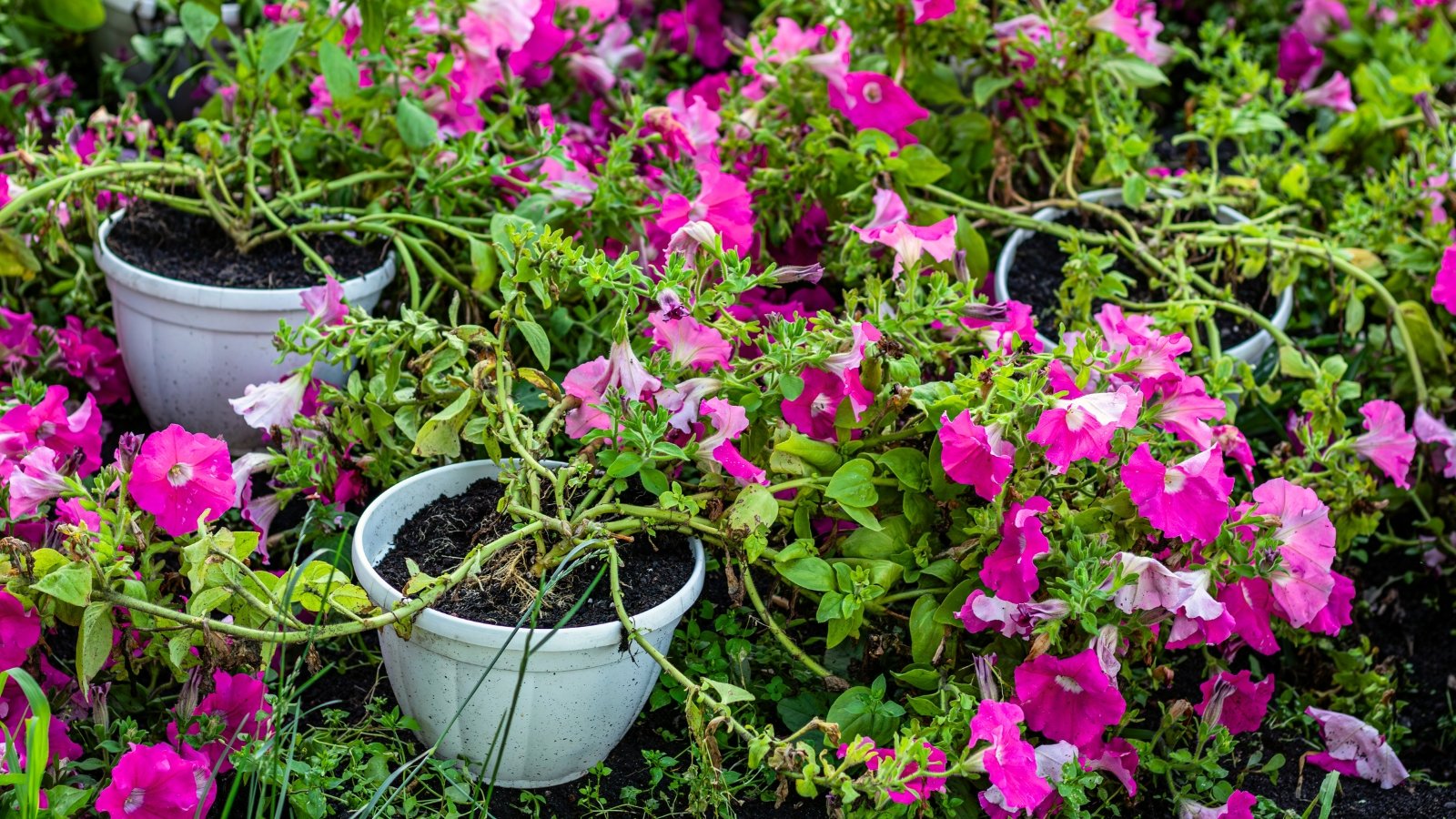
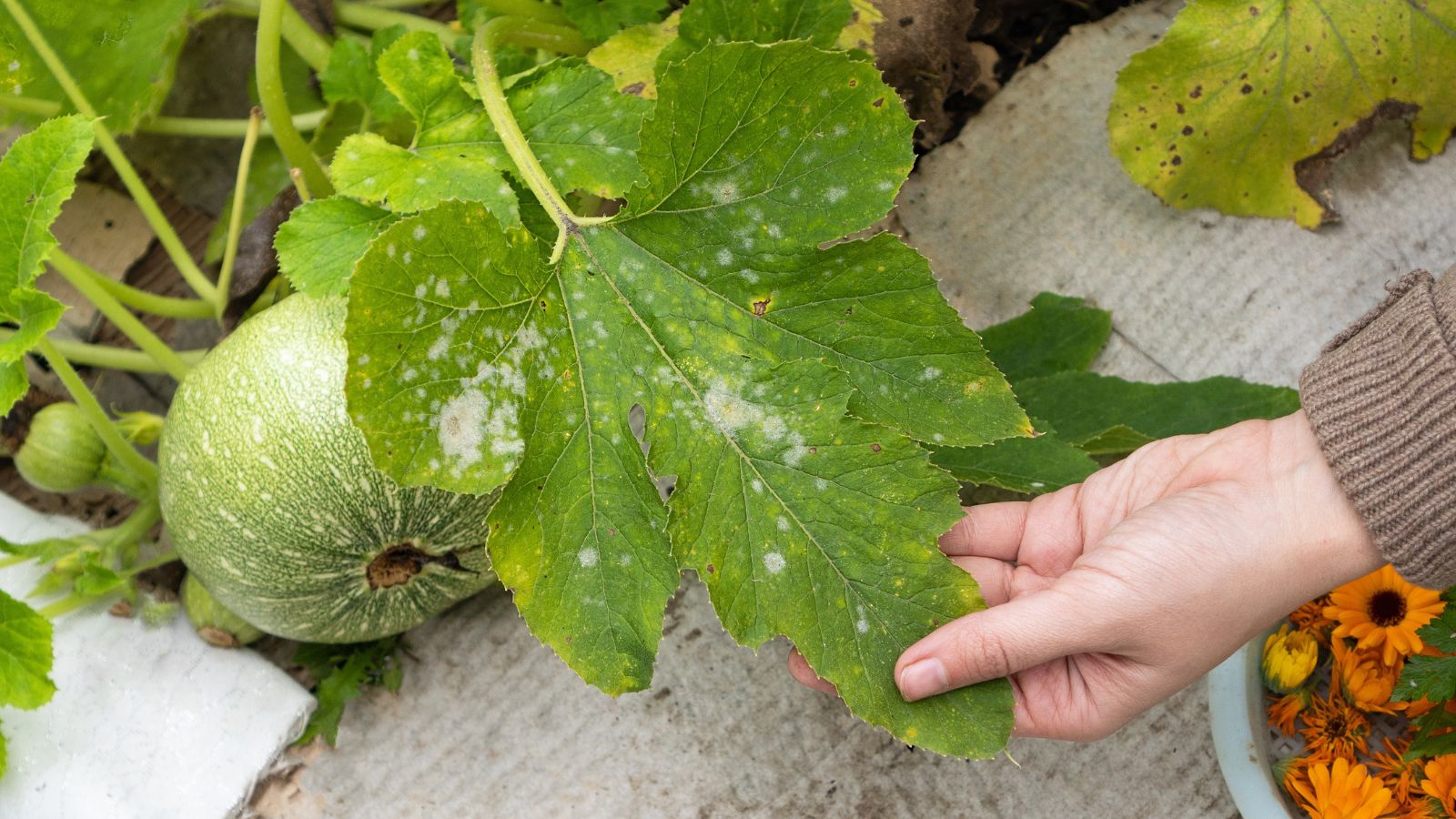
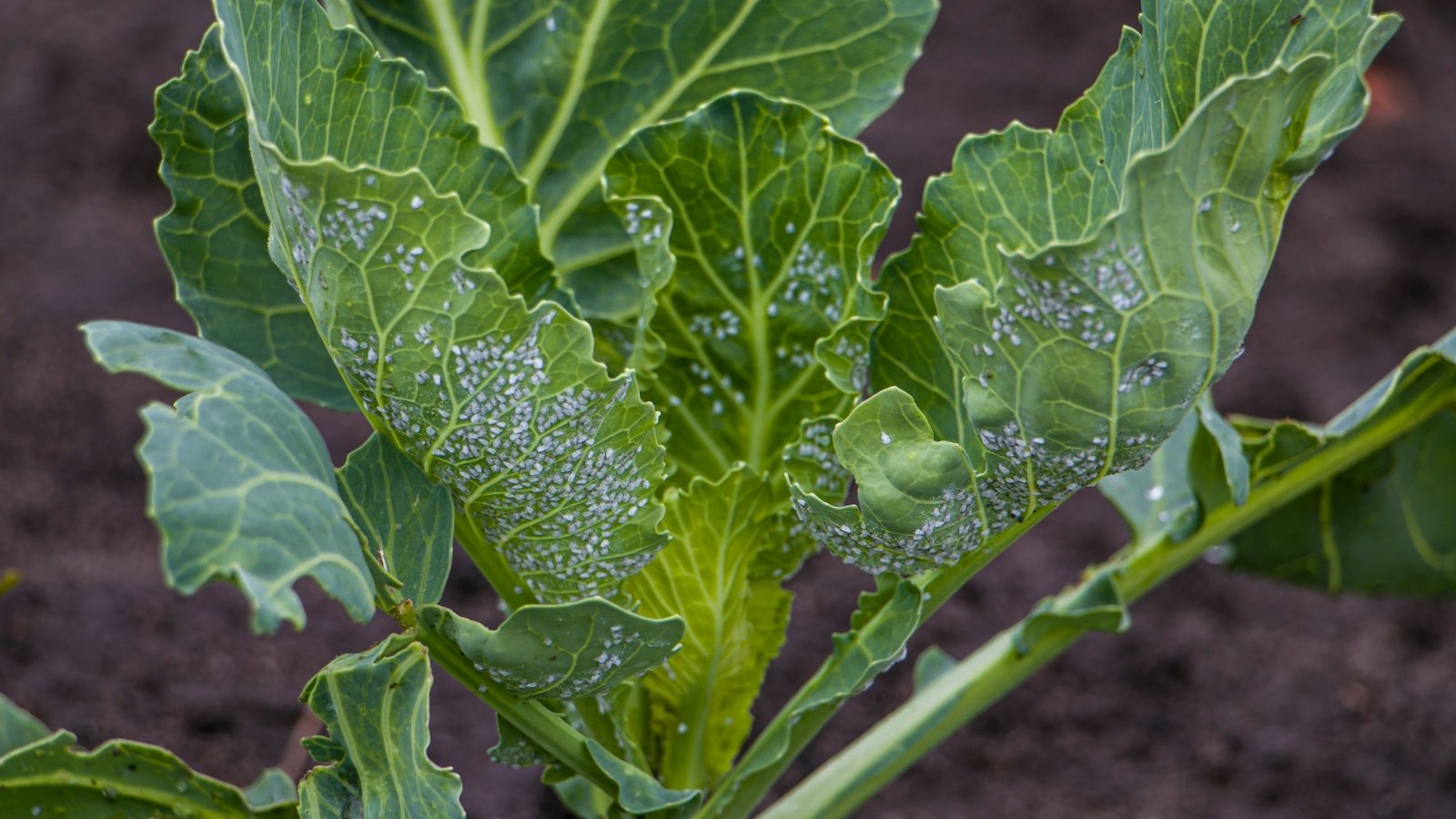
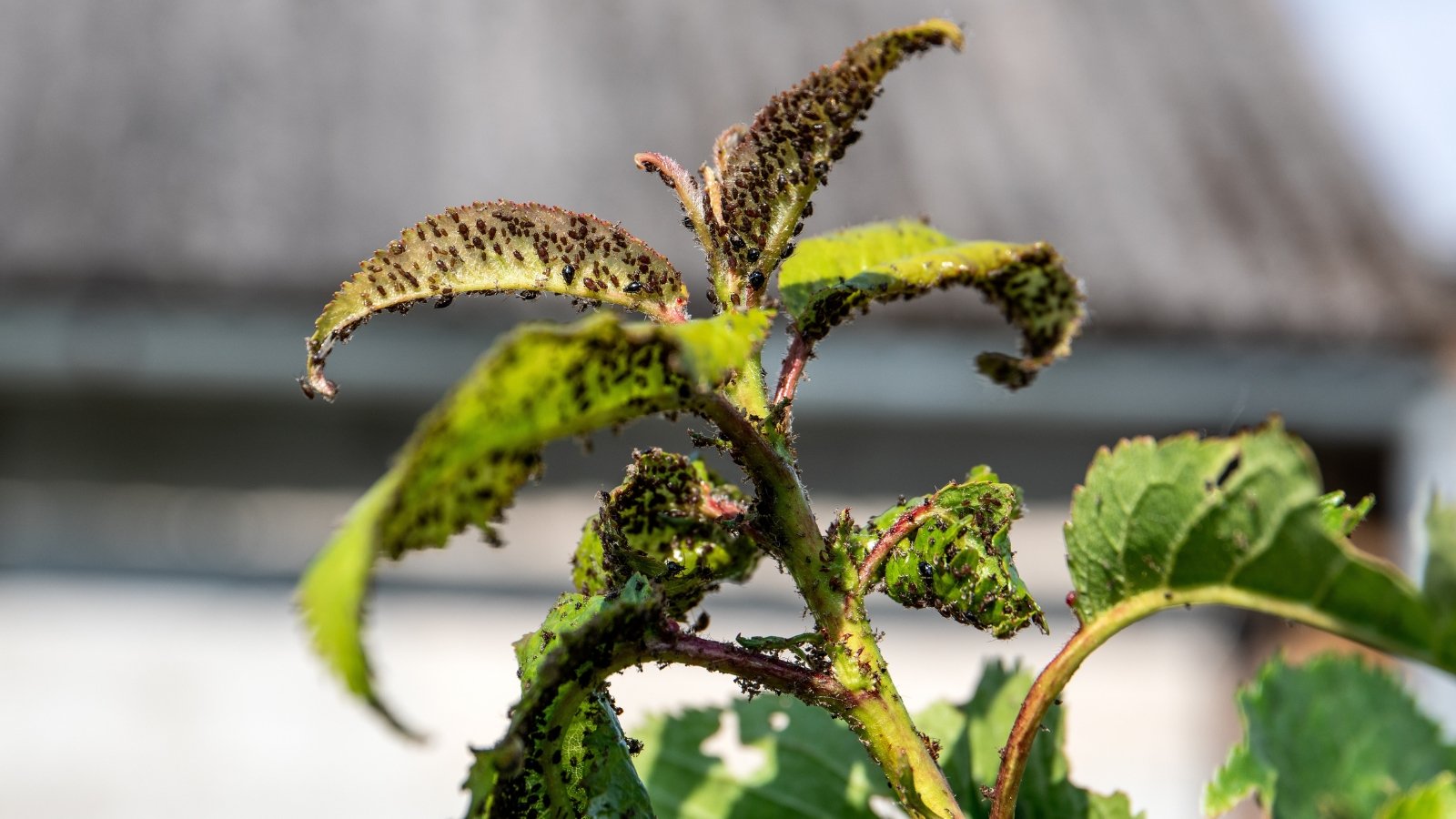
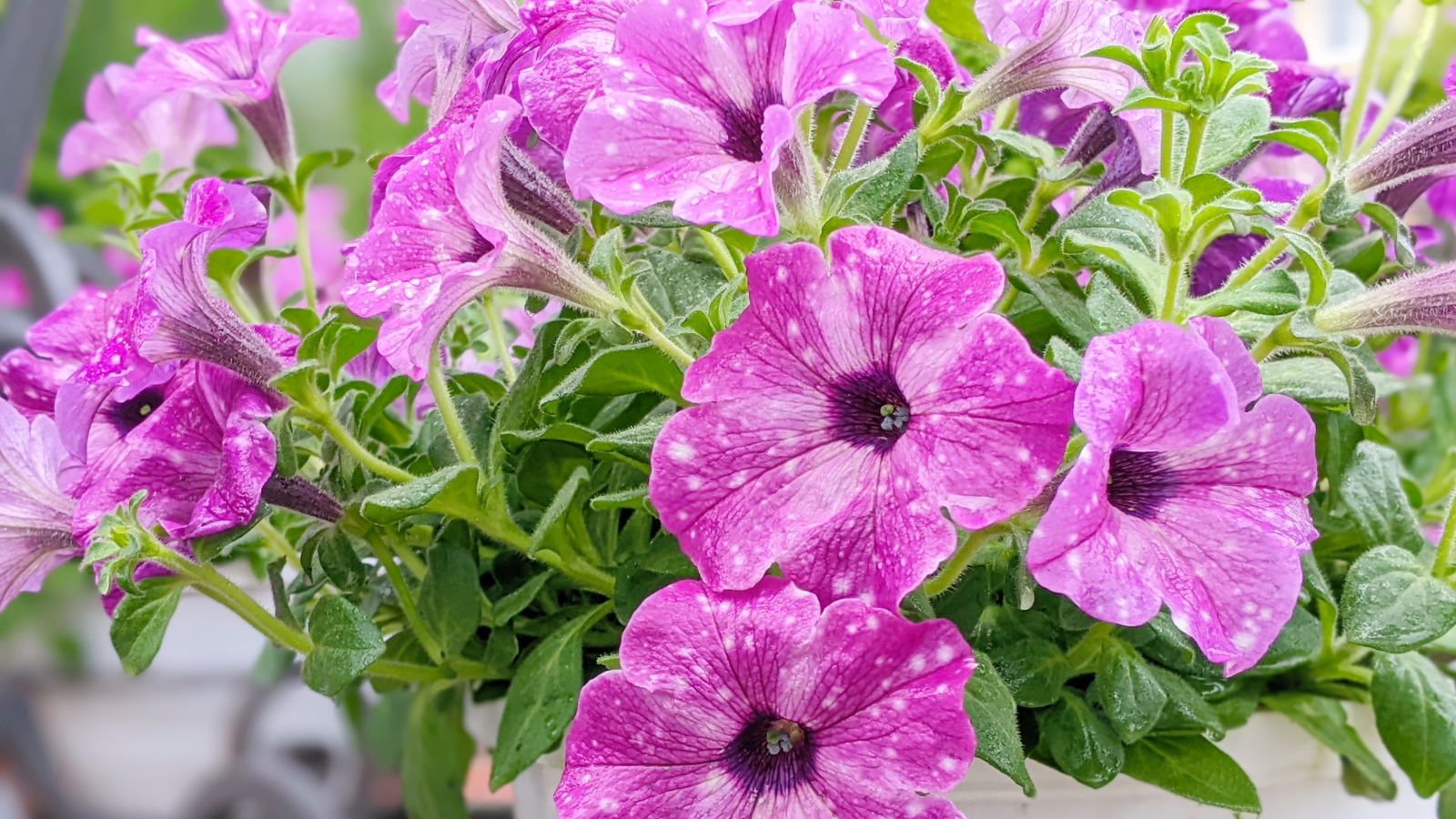
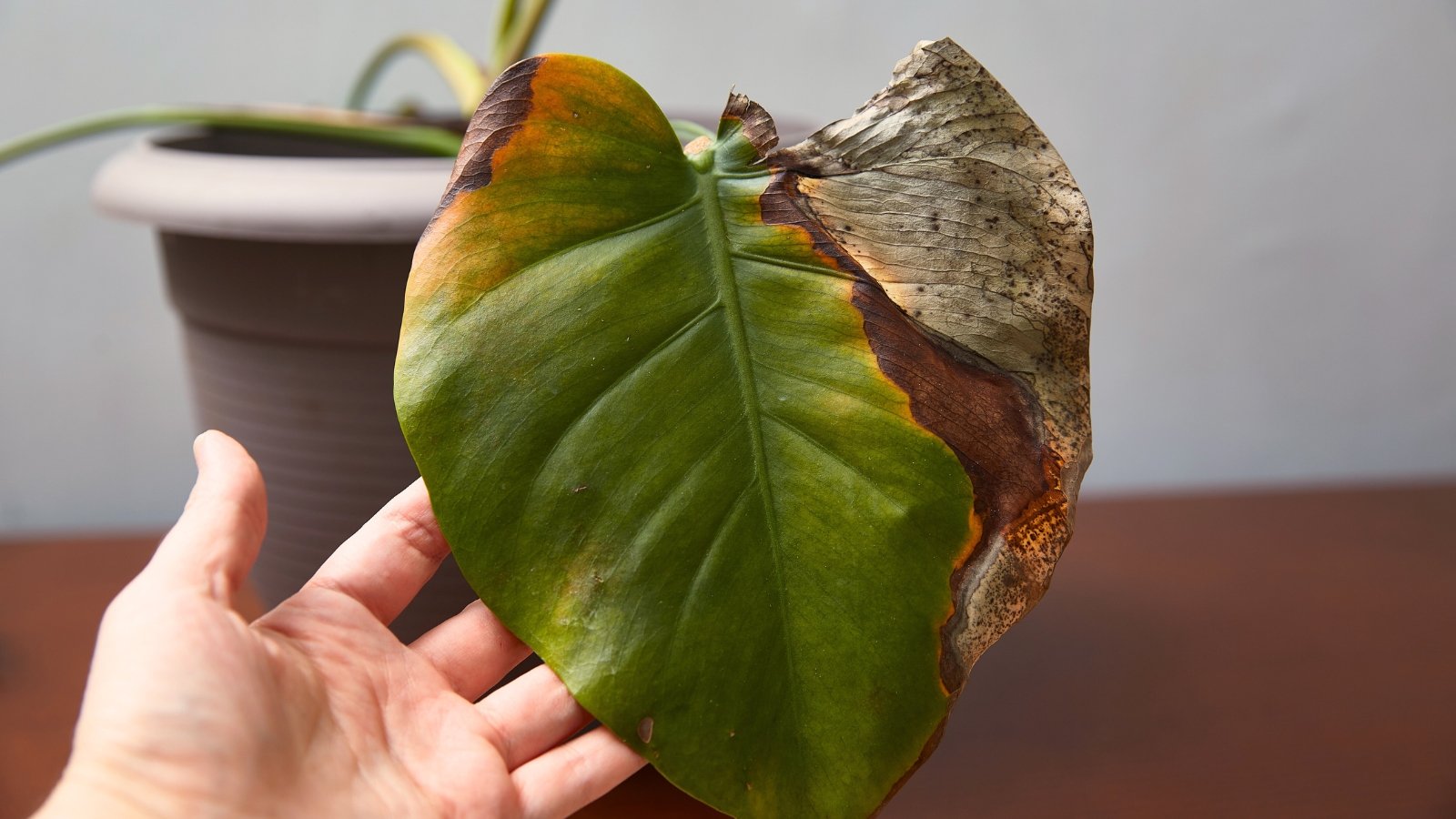

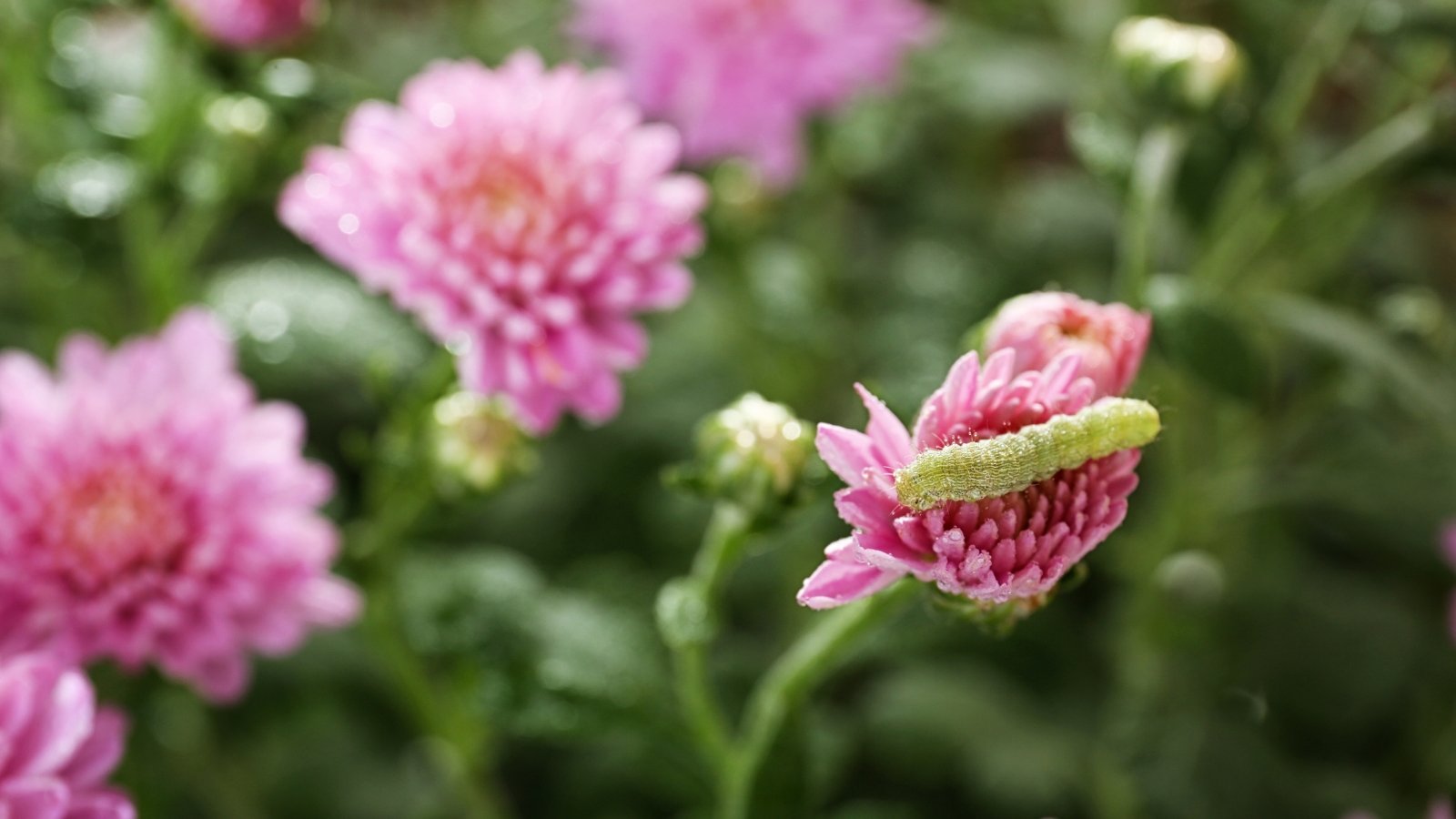
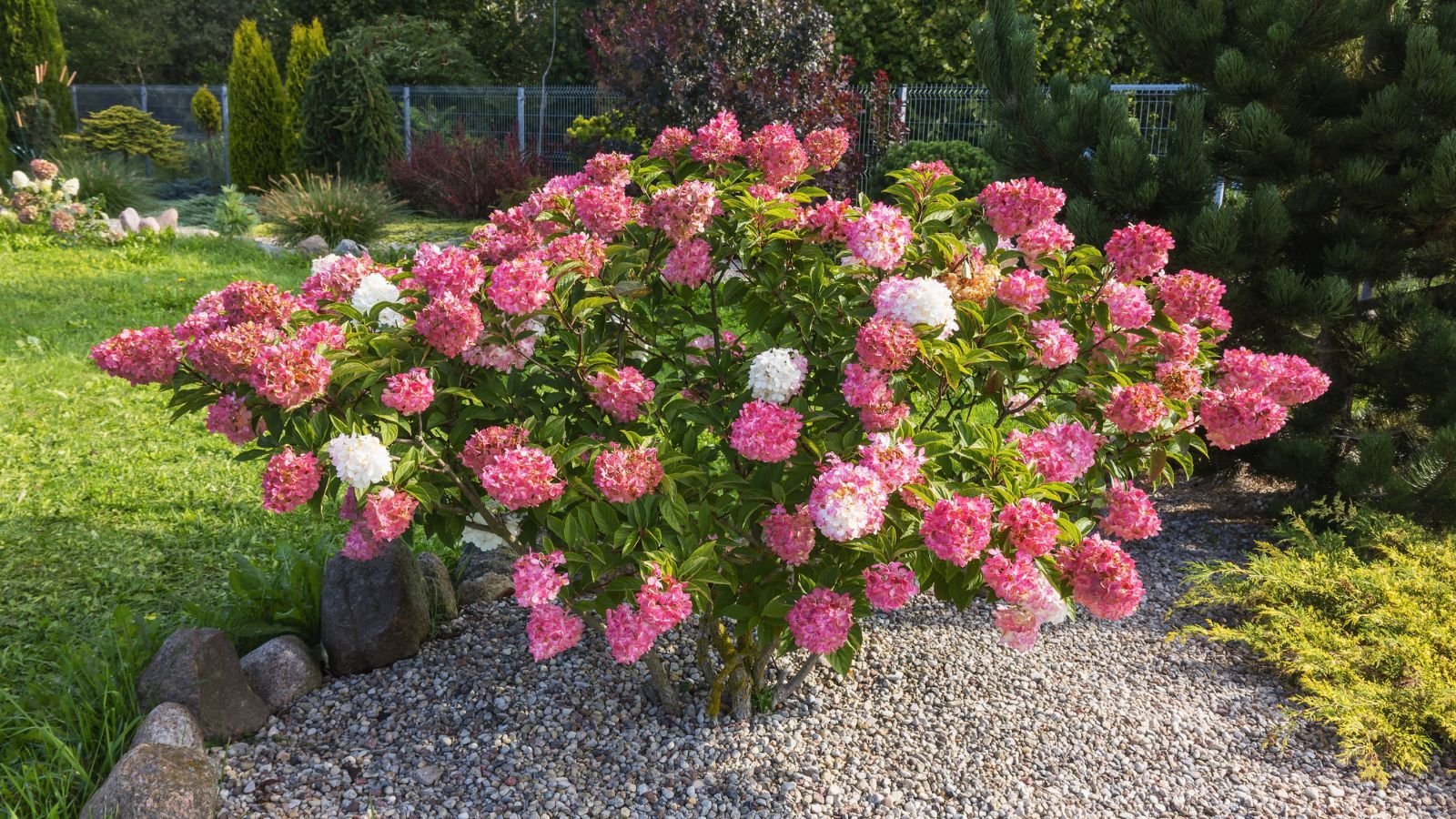
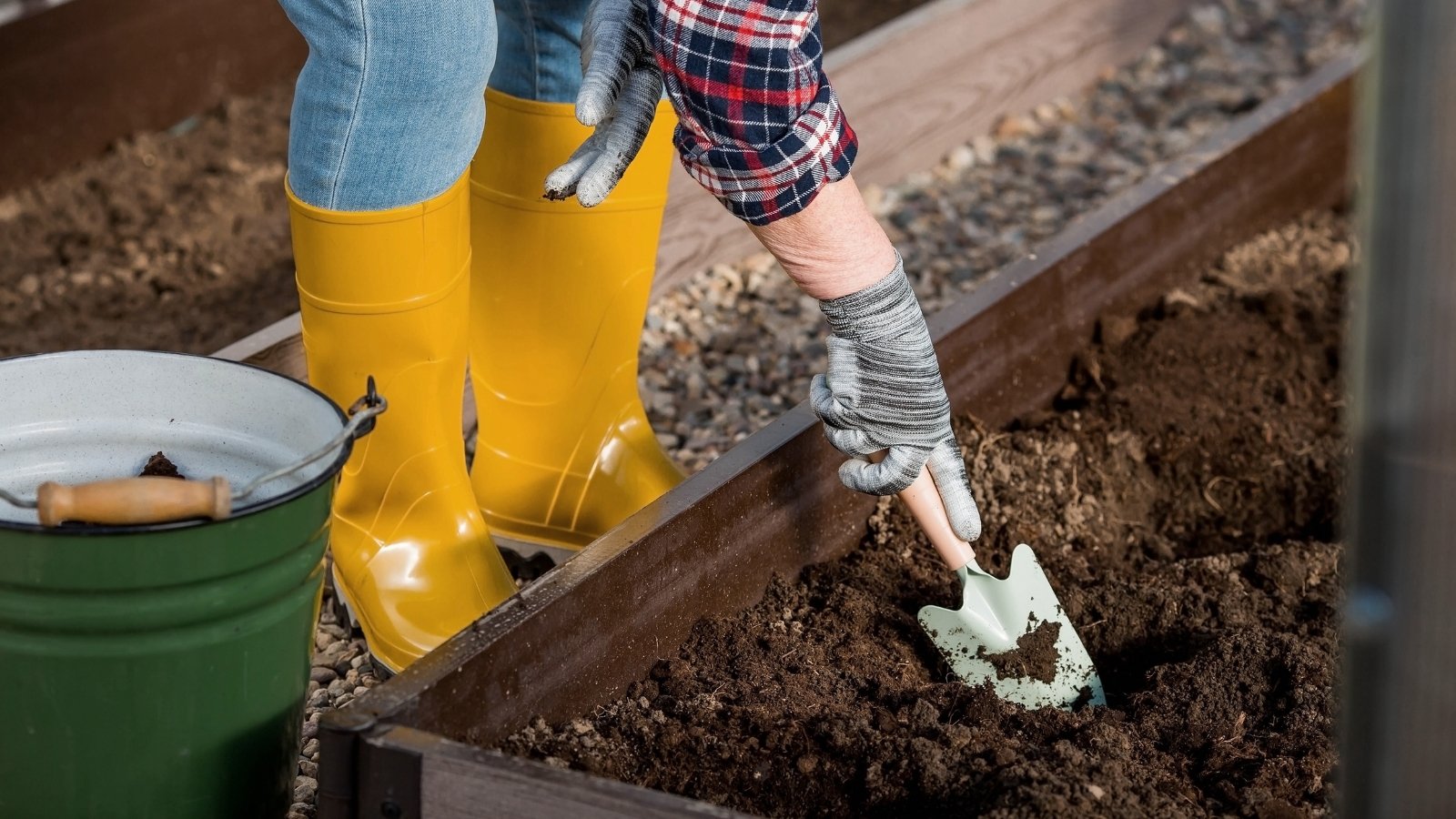

Leave a Reply